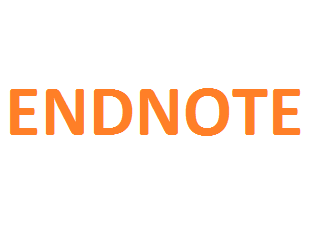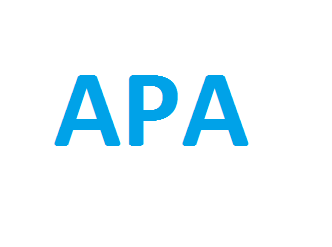
The Academic Perspective Procedia publishes Academic Platform symposiums papers as three volumes in a year. DOI number is given to all of our papers.
Publisher : Academic Perspective
Journal DOI : 10.33793/acperpro
Journal eISSN : 2667-5862
Natech Risk Kriterlerinin Afet Türlerine Göre Ağırlıklandırılması
Abstract
Doğal afetlerin tetiklediği teknolojik kazalar Natech kazaları olarak adlandırılmaktadır. Natech kazaları afetlerin olumsuz etkilerini artırabileceği gibi kendi başına yeni zararlara da yol açabilmektedir. Bu nedenle afet yönetimi kapsamında risk azaltma sürecine Natech kaza risklerinin de dahil edilmesi önemli bir husustur. Natech kazalarına neden olan risk kriterleri her afete göre farklılık göstermektedir. Afetlere göre risk kriterlerinin belirlenmesi Natech kazaları için oluşturulacak risk azaltma çalışmaları için temel oluşturacaktır. Bu çalışmada Natech kazasına neden olabilecek 17 kriter literatür taraması ile belirlenmiştir. Belirlenen kriterler deprem, sel ve orman yangınları afetleri kapsamında ağırlıklandırılmıştır. Kriter ağırlıklandırmada Pisagor Bulanık Analitik Hiyerarşi Prosesi (PBAHP) yöntemi kullanılmıştır. Afet ortamının belirsizlikler içermesi nedeniyle bulanık setlerden yararlanılmıştır. Yöntem uygulaması sonucunda Natech kazasına neden olan en önemli kriterler; deprem afetinde “Tehlikeli Madde ve Yanıcı Salınımı” kriteri, sel afetinde “Afetin Süresi” kriteri ve orman yangını afetinde ise “Rüzgâr Yönü, Hızı, şiddeti” kriteri olmuştur.
References
[1] Güven E, Eren T. İl Afet Risk Azaltma Planı Çerçevesinde ANP Yöntemi İle Kriter Ağırlıklandırma : Kırıkkale İli İçin Bir Örnek. Afet ve Risk Derg 2023;6:401–14. https://doi.org/10.35341/afet.1194357.
[2] Cruz AM, Suarez-Paba MC. Advances in Natech research: An overview. Prog Disaster Sci J 2019;1:1–7. https://doi.org/10.1016/j.pdisas.2019.100013.
[3] Guven E, Pinarbasi M, Mehmet Alakas H, Eren T. Evaluation of natech criteria in organized industrial zones: An application for Kırıkkale province. J Loss Prev Process Ind 2024;91. https://doi.org/10.1016/j.jlp.2024.105379.
[4] Krausmann E, Girgin S, Necci A. Natural hazard impacts on industry and critical infrastructure: Natech risk drivers and risk management performance indicators. Int J Disaster Risk Reduct 2019;40:1–9. https://doi.org/10.1016/j.ijdrr.2019.101163.
[5] Girgin S. The natech events during the 17 August 1999 Kocaeli earthquake: Aftermath and lessons learned. Nat Hazards Earth Syst Sci 2011;11:1129–40. https://doi.org/10.5194/nhess-11-1129-2011.
[6] Antonioni G, Landucci G, Necci A, Gheorghiu D, Cozzani V. Quantitative assessment of risk due to NaTech scenarios caused by floods. Reliab Eng Syst Saf 2015;142:334–45. https://doi.org/10.1016/j.ress.2015.05.020.
[7] Krausmann E, Cozzani V, Salzano E, Renni E. Industrial accidents triggered by natural hazards: An emerging risk issue. Nat Hazards Earth Syst Sci 2011;11:921–9. https://doi.org/10.5194/nhess-11-921-2011.
[8] Guven E, Pinarbasi M, Mehmet Alakas H, Eren T. Ranking of sectors in organized industrial zones according to Natech risk criteria: An application for Gaziantep province in Türkiye. J Loss Prev Process Ind 2024;91:105377. https://doi.org/10.1016/j.jlp.2024.105377.
[9] Landucci G, Antonioni G, Tugnoli A, Cozzani V. Release of hazardous substances in flood events: Damage model for atmospheric storage tanks. Reliab Eng Syst Saf 2012;106:200–16. https://doi.org/10.1016/j.ress.2012.05.010.
[10] Yager RR. Pythagorean fuzzy subsets. Proc 2013 Jt IFSA World Congr NAFIPS Annu Meet IFSA/NAFIPS 2013 2013;2:57–61. https://doi.org/10.1109/IFSA-NAFIPS.2013.6608375.
[11] Yazıcı E, Özcan E, Alakaş HM, Eren T. Hidroelektrik Santrallarda Bakım Strateji Optimizasyonu için Hiyerarşik Bir Karar Modeli Önerisi. J Polytech 2021;25:933–45. https://doi.org/10.2339/politeknik.862024.
[12] Tezcan B, Eren T. Orman Yangınına Sebep Olan Kriterlerin Bulanık Ortamda Değerlendirilmesi. J Polytech 2022:1–17. https://doi.org/10.2339/politeknik.1138806.
[13] Ak MF, Gul M. AHP–TOPSIS integration extended with Pythagorean fuzzy sets for information security risk analysis. Complex Intell Syst 2019;5:113–26. https://doi.org/10.1007/s40747-018-0087-7.
[14] Yu J, Cruz AM, Hokugo A. Households’ Risk Perception and Behavioral Responses to Natech Accidents. Int J Disaster Risk Sci 2017;8:1–15. https://doi.org/10.1007/s13753-017-0116-y.
[15] Zeng T, Chen G, Reniers G, Yang Y. Methodology for quantitative risk analysis of domino effects triggered by flood. Process Saf Environ Prot 2021;147:866–77. https://doi.org/10.1016/j.psep.2020.12.042.
[16] Gülüm P, Ayyildiz E, Taskin Gümüş A. A two level interval valued neutrosophic AHP integrated TOPSIS methodology for post-earthquake fire risk assessment: An application for Istanbul. Int J Disaster Risk Reduct 2021;61:1–16. https://doi.org/10.1016/j.ijdrr.2021.102330.
[17] Sun W, Bocchini P, Davison BD. Applications of artificial intelligence for disaster management. vol. 103. Springer Netherlands; 2020. https://doi.org/10.1007/s11069-020-04124-3.
[18] Chen G, Huang K, Zou M, Yang Y, Dong H. A methodology for quantitative vulnerability assessment of coupled multi-hazard in Chemical Industrial Park. J Loss Prev Process Ind 2019;58:30–41. https://doi.org/10.1016/j.jlp.2019.01.008.
[19] Dökmeci AH, Akduman Ö. Doğal Olayların Tetiklediği KBRN-p Tehlikesi ve Riski: Türkiye Örneği. Doğal Afetler ve Çevre Derg 2022;8:165–77. https://doi.org/10.21324/dacd.979583.
[20] Girgin S, Necci A, Krausmann E. Dealing with cascading multi-hazard risks in national risk assessment: The case of Natech accidents. Int J Disaster Risk Reduct 2019;35:1–13. https://doi.org/10.1016/j.ijdrr.2019.101072.
[21] Boca G, Ozunu A, Vlad SN. Screening of natech hazards: Case study of the Tarnavelor Plateau, Romania. Environ Eng Manag J 2010;9:1329–33. https://doi.org/10.30638/eemj.2010.173.
[22] Xavier JC de M, de Sousa Junior WC. Recognising na-tech events in Brazil: moving forward. Nat Hazards 2016;82:493–506. https://doi.org/10.1007/s11069-016-2194-3.
[23] Suarez-Paba MC, Cruz AM. A paradigm shift in Natech risk management: Development of a rating system framework for evaluating the performance of industry. J Loss Prev Process Ind 2022;74:1–10. https://doi.org/10.1016/j.jlp.2021.104615.
Cite
-
 %0 Academic Perspective Procedia (ACPERPRO) Natech Risk Kriterlerinin Afet Türlerine Göre Ağırlıklandırılması% A Emel Güven , Mehmet Pınarbaşı , Hacı Mehmet Alakaş , Tamer Eren% T Natech Risk Kriterlerinin Afet Türlerine Göre Ağırlıklandırılması% D 1/6/2025% J Academic Perspective Procedia (ACPERPRO)% P 77-89% V 6% N 1% R doi: -% U -
%0 Academic Perspective Procedia (ACPERPRO) Natech Risk Kriterlerinin Afet Türlerine Göre Ağırlıklandırılması% A Emel Güven , Mehmet Pınarbaşı , Hacı Mehmet Alakaş , Tamer Eren% T Natech Risk Kriterlerinin Afet Türlerine Göre Ağırlıklandırılması% D 1/6/2025% J Academic Perspective Procedia (ACPERPRO)% P 77-89% V 6% N 1% R doi: -% U -




